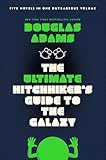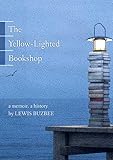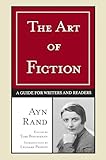A book about crossword puzzles?
I used to be a crossword puzzle lover. It wasn’t because I loved words as much as because I had an assignment at my job that gave me lots of free time in the middle of the day. Every day, I’d do the crossword puzzles in Newsday (Long Island’s paper), the Daily News, and the New York Times. When you do three newspaper puzzles a day, five days a week, you start getting good at it. And it starts getting boring. So before that assignment was done — it only lasted about three months — actually started making crossword puzzles. That’s when you know you’ve got it bad.
(A side note here. Around the same time, I used to play Scrabble with a friend of mine’s mother and her friend. They were incredible Scrabble players and I learned a lot from them. I also made a list of and practically memorized all of the acceptable 2- and 3-letter words in the The Official Scrabble Player’s Dictionary. This is the key to winning at Scrabble, as I learned (to their surprise one day). That and having a decent vocabulary, of course.)
Anyway, that assignment ended and I didn’t have time to do crossword puzzles every day. I’d occasionally do them when trapped on an airliner flying across the country, but that was about it.
Time passed. I started listening to Podcasts, including NPR’s Sunday Puzzle, with the New York Times puzzle master, Will Shortz. Will, of course, began plugging an independent film called Wordplay that had just been made about the American Crossword Puzzle Championship. It sounded interesting. Not interesting enough to trek down to an independent theather in Phoenix, mind you, but certainly interesting enough to add to my Netflix queue.
 Will also started giving away copies of the companion book, Wordplay, as prizes for the Sunday Puzzle winners. The other day, while in a Barnes & Noble bookstore in Flagstaff, I saw the book on the shelf and, on a whim, bought it.
Will also started giving away copies of the companion book, Wordplay, as prizes for the Sunday Puzzle winners. The other day, while in a Barnes & Noble bookstore in Flagstaff, I saw the book on the shelf and, on a whim, bought it.
It was a quick read. I learned a lot of things.
First of all, there are a lot of people that are seriously into crossword puzzles. In my crossword puzzle heydays, I was just starting to approach the fringe of how these people live. I’m kind of glad that assignment ended; I don’t think I’d want my life to revolve around crossword puzzles, as the lives of some of these folks do.
Second, did you know that the New York Times crossword puzzle is easiest on Monday, progressing to a higher level of difficulty as the days of the week pass? Saturday’s is the toughest and Sunday’s, although largest, is only about as tough as one from a Wednesday or Thursday.
How does the toughness get established? Not by the fill — that’s the letters and black boxes in the grid. By the clues. Straightforward, “dictionary definition” clues are easiest. Clues that rely on puns or wordplay are the toughest. That’s Will Shortz’s job — he doesn’t create the puzzles, but he edits them for difficulty.
Good puzzles have themes that are carried out throughout the puzzle. The more theme words or phrases throughout the puzzle, the better that puzzle is. And if theme words and phrases are puns or wordplays on the theme, all the better.
I also learned that crossword puzzles are often created by computer (a sad state of affairs) but that some expert puzzle makers can create a good crossword in a few hours. One puzzle maker actually created an entire puzzle in less than an hour during the competition, based on a theme provided by the audience.
The book includes about 50 puzzles. Some are the contestants’ favorites — you know a person is serious when he can tell you his favorite puzzle by name or date — and others are puzzles used in the competition. I left the book at my place at Howard Mesa so I could fiddle with the puzzles in the evening before I go to bed.
If you like crossword puzzles and are interested in the creation and completion processes, I highly recommend the book.
Now I can’t wait for the movie to come out on DVD so I can watch it.
 I’d read The Hitchhiker’s Guide to the Galaxy some time ago and probably even read a few of its sequels. But when The Ultimate Hitchhiker’s Guide to the Galaxy was released, I added it to my Amazon.com wish list. Within two weeks, I had it in my hot little hands.
I’d read The Hitchhiker’s Guide to the Galaxy some time ago and probably even read a few of its sequels. But when The Ultimate Hitchhiker’s Guide to the Galaxy was released, I added it to my Amazon.com wish list. Within two weeks, I had it in my hot little hands.







